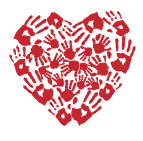T: 01268 546237
waterman.admin@heartsacademy.uk
Computing
Curriculum Intent
At Waterman our Computing curriculum aims to:
- give the children the skills and knowledge they need to be successful now and in their future lives
- ensure that all children have a high degree of digital literacy and a complex knowledge of computing. Pupils will learn computational thinking and creativity and use it to understand and work through digital problems.
- teach children how to be safe and alert online (in accordance Teaching Online Safety in School 2019) whilst also fostering a keen interest and enthusiasm for all that the internet has to offer. This includes helping to foster an enthusiasm for digital literacy and using this to enhance learning.
- teach underlying principles and concepts of Computer Science (logic, algorithms, etc...) including writing computer programs. Pupils are equipped to create simple and complex programs, systems and a range of digital content by building on this knowledge and understanding.
- achieve improved standards within and across the curriculum by the most effective and integrated use of technology. Technology will be used as a tool to support teaching and learning, aiding highly informed teachers and ensuring all children achieve well.
Implementation
Waterman Primary and Nursery School uses direct, instructional teaching and modelling ensuring that within every lesson there are opportunities for children to independently explore programmes and technologies. Children predict the behaviour of simple programmes; detect and correct errors in algorithms and solve problems by using logical reasoning. We allow children to explore for themselves the features of programmes and use them for effect. Children are encouraged to find answers to questions such as: what happens if? How can I achieve this?
We further implement our Computing curriculum through:
- Topics that are revisited by key stage/year group to ensure we continually build on prior knowledge, develop curiosity and embed essential knowledge into long term memory.
- Computing skills taught discretely and throughout the curriculum, supporting other areas of learning across the school and deepening skills sets (at Stambridge we use Google Chromebooks and Google Classroom across the curriculum).
- Weekly computing lessons with a focus on one of the three pillars of computing: Computer Science (CS), Digital Literacy (DL) and Information Technology (IT)
- For example: Scratch – coding and debugging (CS)
- Movie maker and green screen; Photo Story (IT)
- Codes of conduct; Online safety (Googles ‘Be Internet Legends’ materials) (DL)
- Online Safety lessons taught at the beginning of each half term, in each year group, and in keeping with Teaching Online Safety in School 2019 (which informs our practice)).
- Googles ‘Be Internet Legends’
- Safer Internet Day materials produced and used annually to raise further awareness
- A wide range of programmes is used to support the three pillars of computing including: PowerPoint/Google slides, MS Word/Google Docs, MS Excel/Google Sheets, Scratch, Photo Story, 2Simple, DoInk, and many others.
If you were to walk into a Computing lesson at Waterman, you would see:
- Users of technology who are developing their proficiency, able to work both independently and collaboratively.
- Computing hardware and software being utilised to enhance the learning and outcomes of our children, across the curriculum.
- A clear progression in skills, knowledge and understanding. A clear progression in skills, knowledge and understanding from Early Years to upper KS2.
- Digital Leaders who are able to assist children and staff.
Please visit HEARTS Academy Trust Curriculum for our Computing curriculum.
Address
Waterman Primary SchoolThe BoulevardRochfordSS4 1QF
Useful Links
Contact info
Mr D Wry
Executive Head Teacher
Mrs K Collison
Head of School
Mrs H Purcell
SENDCo & Senior Teacher
Enquiries:
Miss C Day
E: waterman.office@heartsacademy.uk
T: 01702 546237
For any swimming enquiries please email: watermanswimming@heartsacademy.uk
(Calls may be recorded for training and quality purposes)
Office hours
8.30am - 3.30pm
@HeartsTrust
@BriscoePrimary
@StambridgePri
@WatermanPrimary
@WickfordCofESch
@HilltopInfant
@HilltopJun
Website design by Kittle Visual Marketing









